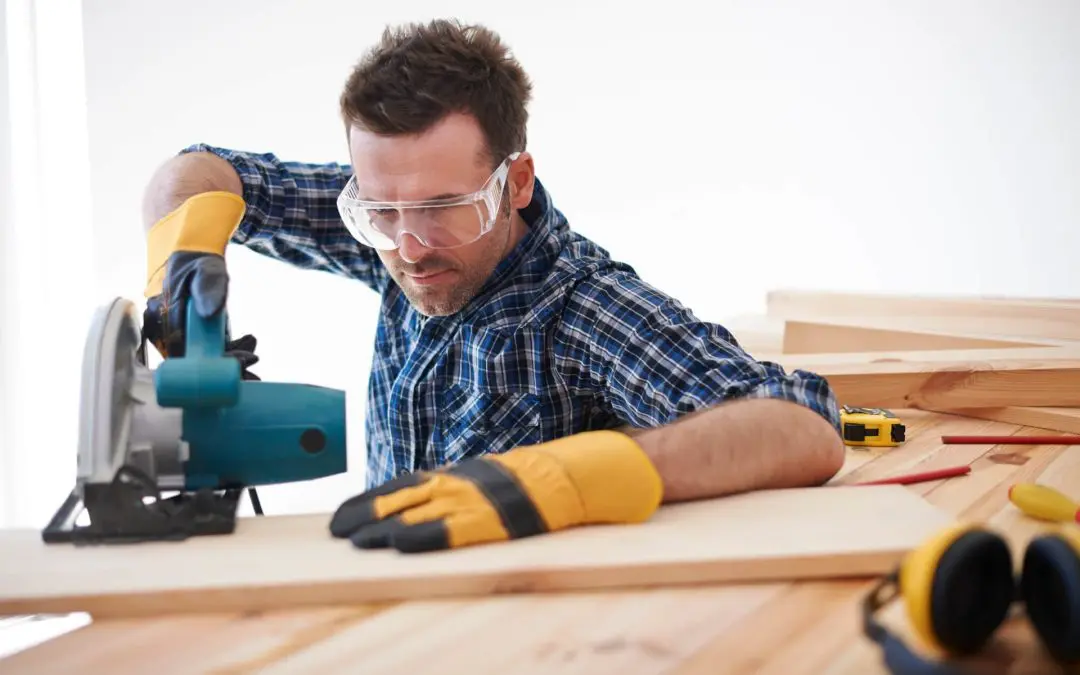Power tools are indispensable for DIY enthusiasts and professional builders, offering the strength and speed to accomplish tasks that manual tools could never match. However, if mishandled, they also come with significant safety risks. This blog post will guide you through essential power tool safety practices so you can use your tools without endangering yourself or others. Here’s how to stay safe while getting the most out of these tools for your home projects.
Understand Your Tools
Before you even plug in a power tool, it’s critical to fully understand how it operates. Always read the user manual that comes with each tool, as it provides vital information on operation procedures, maintenance, and safety advice specific to that model. Recognizing your tools’ capabilities and limitations enhances your efficiency and prevents misuse that could lead to accidents.
Wear Appropriate Safety Gear for Power Tool Safety
Personal protective equipment (PPE) is non-negotiable when working with power tools. Depending on the tool and the nature of the work, this may include safety goggles or face shields to protect against flying debris, ear protection to guard against noise, gloves to prevent cuts and abrasions, and dust masks or respirators in environments where you are exposed to harmful particles. Being properly outfitted dramatically reduces the risk of injuries.
Keep a Well-Maintained Workspace
A cluttered workspace leads to accidents involving power tools. Make your work area well-organized and free of unnecessary objects. Good lighting is also essential to see what you are doing. Make sure your tools are properly maintained. Regularly check for signs of wear, confirm that all parts are in good working order, and keep tools clean and sharp. A well-maintained tool is less likely to malfunction and cause injury.
Be Mindful of Electricity
Handling power tools requires caution to avoid electric shock or electrocution. Use tools with grounded three-prong plugs, and never remove the grounding pin to try to make it work with a two-prong outlet. When working in damp locations, use a Ground Fault Circuit Interrupter (GFCI) to protect against electrical shock hazards. Be careful with the power cords so they don’t become tripping hazards, and never carry a tool by the cord.
Power Tool Safety: Stay Focused
Distraction is a significant hazard when using power tools. Always give your full attention to the task at hand. Avoid using power tools when you are tired or in a hurry. These conditions impair judgment and reaction time, increasing the likelihood of mistakes.
Know How to Handle Emergencies
Despite all precautions, accidents still happen. Knowing basic first aid and having a first aid kit readily available is essential. Know how to turn off power tools quickly and how to call for help in an emergency. Being prepared makes a critical difference in the outcome of an accident.
By following these guidelines, you will use power tools for your home projects safely and effectively. Remember, safety is not just a protocol but a mindset that should be maintained every time you power up. Stay safe so your projects are successful and injury-free.
FAQs on Power Tool Safety
What should I do if my power tool starts making a strange noise or vibrating unusually?
Stop using it immediately. Unplug the tool and check for signs of damage or wear. Consult the user manual for troubleshooting tips or contact the manufacturer for advice. Do not use the tool again until it has been assessed and repaired.
Can I use any extension cord with my power tools?
No, not all extension cords are suitable for use with power tools. You need to use an extension cord that is appropriately rated for the power demands of the tool. Look for cords designated for outdoor use and have a sufficient wire gauge (thickness) to handle the electrical current without overheating.
Is it safe to wear gloves when using power tools?
While gloves can protect against cuts and abrasions, they are inappropriate for all power tools. For tools with a risk of the gloves catching in moving parts, such as drills or circular saws, it is safer not to wear them. Refer to the tool’s user manual for specific recommendations.
How often should I check my power tools for wear and damage?
Inspect your power tools before each use for signs of wear or damage. Perform more thorough checks and maintenance routines periodically, as the manufacturer recommends, usually once every few months, depending on usage frequency.
Best Choice Inspections offers home inspection services in Knoxville and the surrounding area. Contact us to schedule an appointment.

